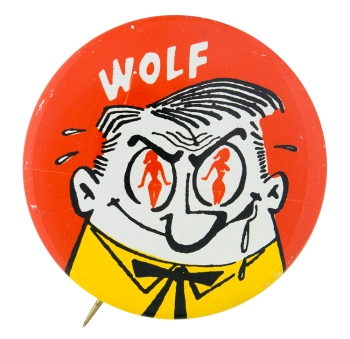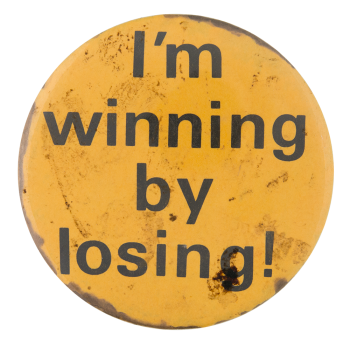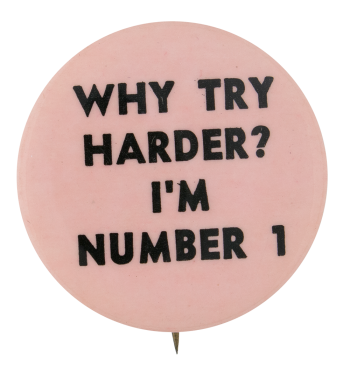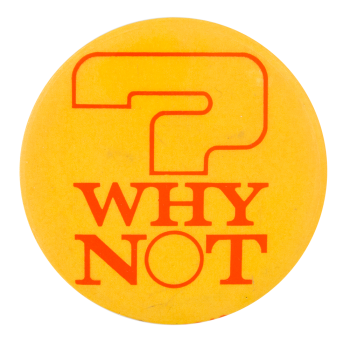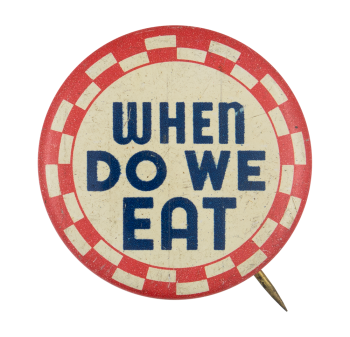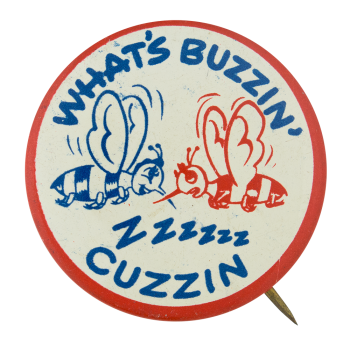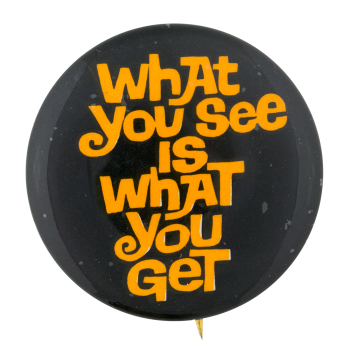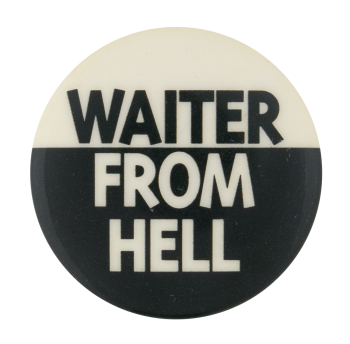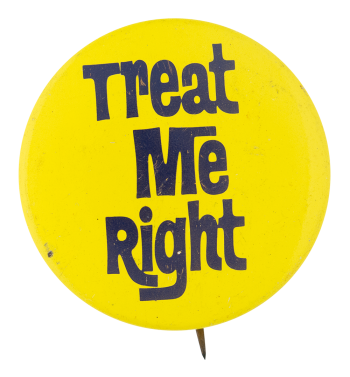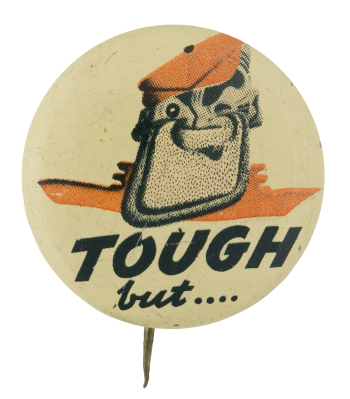Wolf
| Category | |
|---|---|
| Additional Images | |
| Sub Categories | |
| Text on Button | WOLF |
| Image Description | Red background with a drawing of a man with a yellow shirt and black bow tie. Some drool off his smile and sweat coming off his head. The man has a red woman's silhouette in each eye. There is white text above his head to the left. |
| Back Style | |
| The Shape | |
| The Size | |
| Additional Information | This button is part of a set that features cartoon images of men's behaviors. There are at least five pins in the series, each depicting a different man. They are "Wolf," "Loudmouth," "Freeloader," "Lush," and "Shy Guy." Each man's illustrations accentuate their particular title with small details; the "Wolf" has a shapely woman's red silhouette for eyes. He is also drooling and sweating. The term "Wolf" in this context refers to "a man given to seducing women," or "a person who habitually preys upon others." Stylistically, the drawings are similar to mid-century cartoons found in adult magazines or illustrations on cocktail napkins. |
| Catalog ID | IB0052 |

